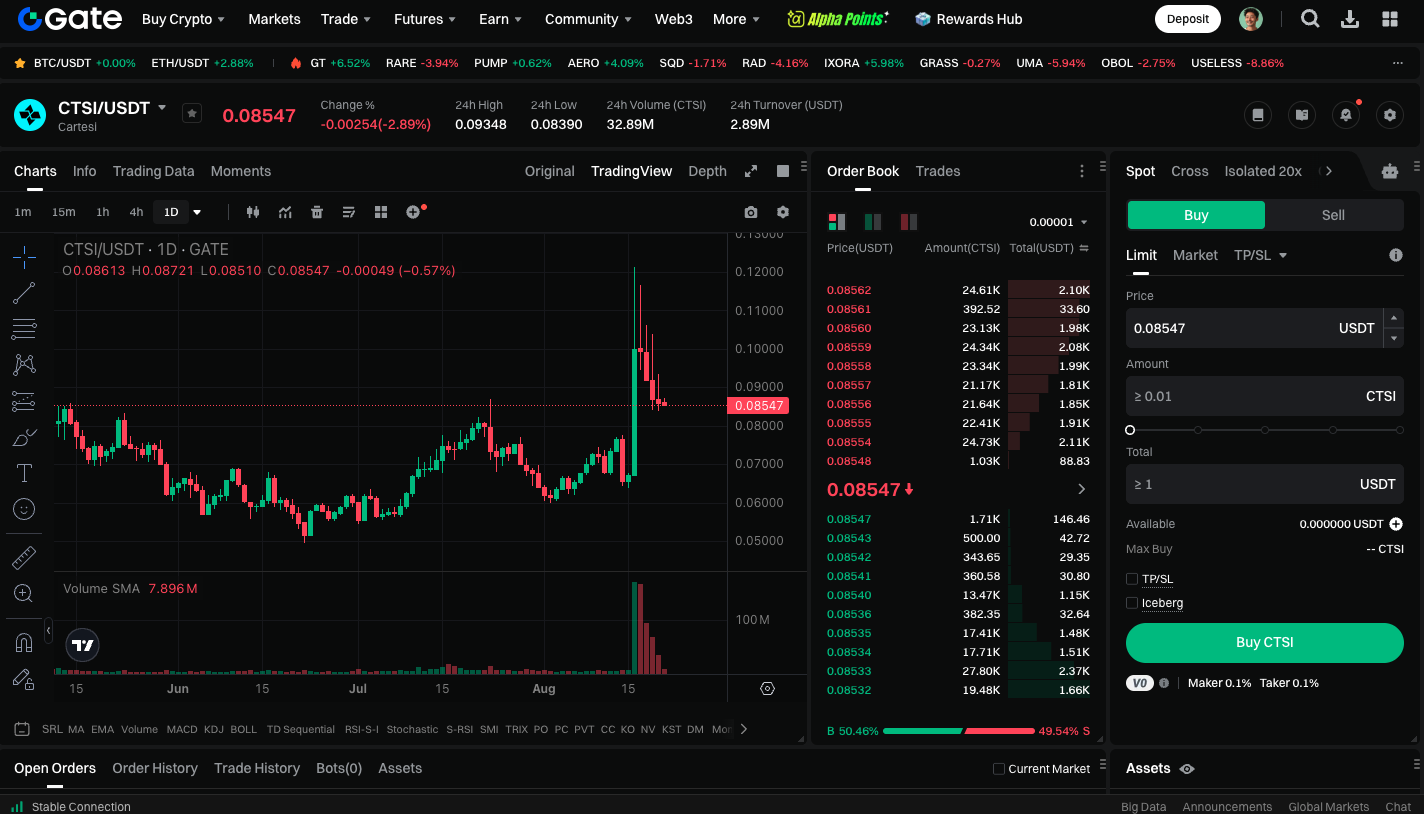What is Cartesi (CTSI)?
What is Cartesi?

(Source: cartesiproject)
Cartesi (CTSI) is not merely a blockchain. It's an innovative platform that integrates Layer 2 technology, real-world computational power, and a developer-friendly environment. At its core, Cartesi aims to bring blockchain into an era capable of supporting truly complex applications, closing the gap between Web2 and Web3 development experiences. Whether it's gaming, financial solutions, or AI-powered smart contracts, Cartesi's technology is designed to give developers the freedom to build with fewer constraints.
Core Principles and Technology of Cartesi
What sets Cartesi apart is its use of Layer 2 solutions and a Linux runtime environment to bring traditional programming languages and tools into the blockchain space. Developers are no longer limited to Solidity or other blockchain-specific languages—they can build decentralized applications (dApps) using familiar mainstream languages like C++ and Python. Cartesi highlights the following technical features:
High-performance computing: By leveraging off-chain computation with on-chain verification, Cartesi reduces the workload of the main chain and ensures scalability.
Real-world development environment: Developers can execute code within a Linux operating system, significantly lowering the learning curve.
Cross-chain potential: Cartesi is not locked into a single chain—it can interact with multiple blockchains, setting the stage for a multi-chain future.
Cartesi provides an accessible entry point for developers transitioning to Web3 and offers decentralized applications the opportunity to overcome current limitations.
Use Cases and Potential
Cartesi’s technical strengths enable a wide range of use cases:
GameFi and Entertainment
Games require substantial off-chain computation and real-time response. Cartesi’s Linux environment allows game developers to use established tools to deliver experiences comparable to those in Web2.DeFi Protocols
Financial applications often involve complex data processing and risk modeling. Cartesi’s architecture supports intensive off-chain computations with efficient on-chain verification, balancing transparency and performance.AI and Data Processing
AI requires significant computing power for training and inference. Cartesi’s scalability allows AI models to be integrated into decentralized applications, unlocking new Web3 × AI possibilities.Cross-chain Applications
With its design for interoperability, Cartesi operates across multiple blockchains, positioning itself as a foundational layer in the Web3 ecosystem.
These potential applications represent more than technical progress—they highlight Cartesi’s potential to become a central engine in the emerging dApps ecosystem.
Cartesi Tokenomics
Cartesi’s native token, CTSI, is fundamental to the ecosystem. Beyond its function as a medium of exchange, it underpins network operation and governance.
Governance: Holders can participate in project governance, deciding on future development and resource allocation.
Economic incentives: CTSI is used for staking and reward mechanisms, promoting node participation and securing the network.
Payment utility: In the Cartesi ecosystem, CTSI is used for computing resource payments—such as off-chain computation fees.
Developer support: Token incentives help drive ongoing developer contributions and ecosystem expansion.
CTSI has a capped maximum supply of 1 billion tokens, making it scarce by design and potentially more valuable as the ecosystem grows.
Token Distribution
Cartesi’s token distribution is structured to balance development, community, team incentives, and long-term growth. According to the official whitepaper and related disclosures, the allocation follows this structure:
Foundation (30.9%): Core funds supporting research, infrastructure, and long-term growth.
Enterprise partners (5%): Dedicated to fostering partnerships and real-world adoption with industry players.
Marketing and community building (5%): Used to grow Cartesi’s market reach and expand its community ecosystem.
Advisors (2.1%): Rewarding strategic partners for their expertise and development support.
Core team (15%): Ensures lasting incentives for developers and operators to sustain project growth.
Private sale (10%): Early backers and investors who provided funding during initial stages.
Public token sale (5%): Open to a broader market to boost liquidity and community involvement.
Mining reserve (25%): Reserved for staking and mining rewards, supporting network stability and security.
This allocation model strikes a balance between sustainable project growth and active community participation, providing a foundation for long-term token value.
CTSI_USDT Spot Trading
CTSI serves not only as a trading asset but also plays an integral role in governance, staking, rewards, and development support. In CTSI_USDT spot trading, investors can trade CTSI on mainstream crypto exchanges and use USDT to manage price volatility, enhancing both asset appreciation and liquidity management.
Cartesi’s technical strengths and diverse use cases provide CTSI with the potential for long-term appreciation. Spot trading offers investors a flexible platform to adjust strategies across both short-term and long-term horizons.
You can trade CTSI spot now at: https://www.gate.com/trade/CTSI_USDT

Summary
Cartesi (CTSI) is not simply a token or a blockchain—it’s a breakthrough project aiming to merge traditional software development with blockchain applications seamlessly. Its mission is to lower the barriers for developers entering Web3 and to advance the adoption of decentralized applications. As demand grows for gaming, DeFi, and AI on blockchain, Cartesi’s role is likely to become even more significant, with CTSI standing at the center of governance, incentives, and utility across the ecosystem.
Related Articles

Pi Coin Transaction Guide: How to Transfer to Gate.io

What is N2: An AI-Driven Layer 2 Solution

How to Sell Pi Coin: A Beginner's Guide

Grok AI, GrokCoin & Grok: the Hype and Reality

Flare Crypto Explained: What Is Flare Network and Why It Matters in 2025
